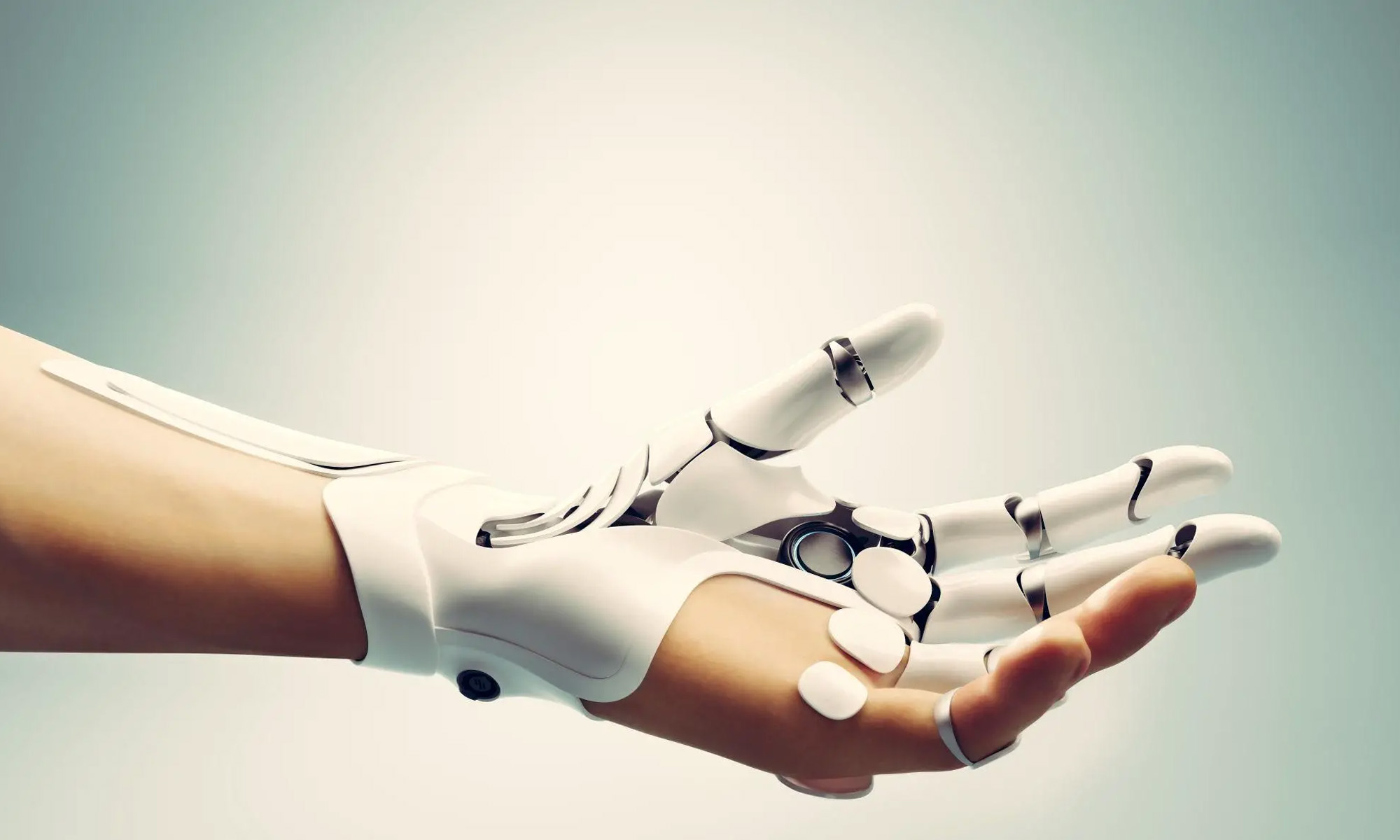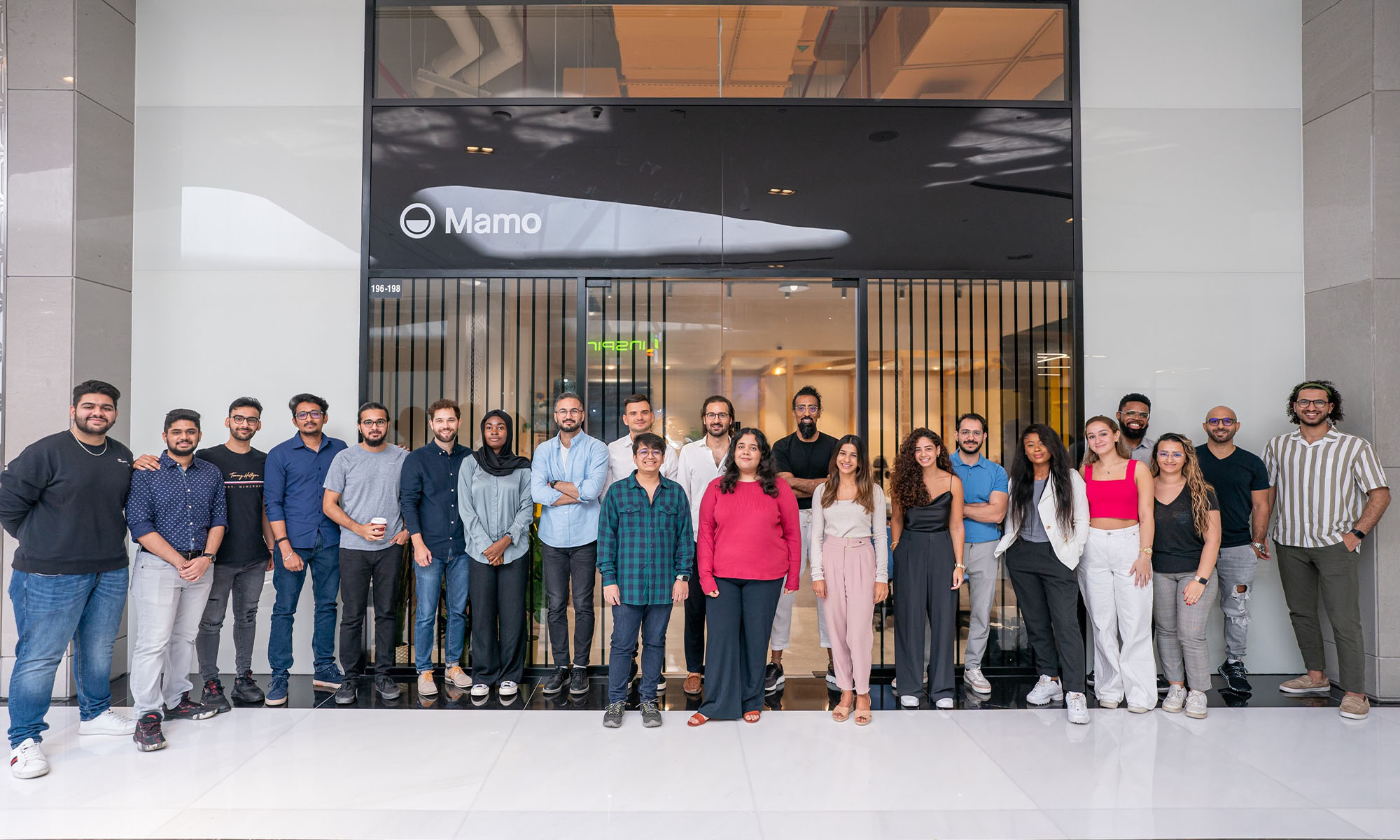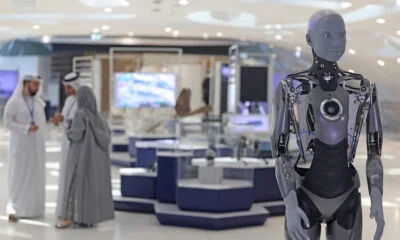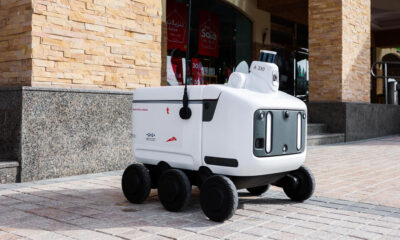News
New Artificial Skin For Robots Allows Them To Feel Things
A groundbreaking new development from a Caltech researcher means that robots will soon be able to “feel” their surroundings, with sensations relayed back to human operators.

Caltech assistant professor of medical engineering, Wei Gao, has developed a new platform for robots and their operators known as M-Bot. When it hits the mainstream, the technology will allow humans to control robots more precisely and help protect them in hostile environments.
The platform is based around an artificial skin that effectively gives robots a sense of touch. The newly developed tool also uses machine learning and forearm sensors to allow human users to control robots with their own movements while receiving delicate haptic feedback through their skin.
The synthetic skin is composed of a gelatinous hydrogel and makes robot fingertips function much like our own. Inside the gel, layers of tiny micrometer sensors — applied similarly to Inkjet printing — detect and report touch through very gentle electrical stimulation. For example, if a robotic hand picked up an egg too firmly, the artificial skin sensors would give feedback to the human operator on the sensation of the shell being crushed.
Also Read: Futuristic Electric Self-Driving Trucks Are Coming To The UAE
Wei Gao and his Caltech team hope the system will eventually find applications in everything from agriculture and environmental protection to security. The developers also note that robot operators will be able to “feel” their surroundings, including sensing how much fertilizer or pesticide is being applied to crops or whether suspicious bags contain traces of explosives.
Abdulmotaleb El Saddik, Professor of Computer Vision at Mohamed bin Zayed University of Artificial Intelligence, has noted that the new development offers even more applications and possibilities: “The ability to physically feel the touch, including handshakes and shoulder patting, could contribute to creating a sense of connection and empathy, enhancing the quality of interactions, particularly for the elderly and people living at a distance or those who are in space [such as] astronauts connecting with their family and children”.
News
Mamo Completes $3.4M Funding Round To Enhance Fintech Services
The startup will use the influx of cash to expand into Saudi Arabia and across the wider GCC while improving its product offering.

UAE-based fintech Mamo has announced the completion of a $3.4 million funding round that will help the startup extend its market presence and improve its product offering. Investors included 4DX Ventures, the Dubai Future District Fund and Cyfr Capital.
Mamo’s platform offers “payment collection, corporate cards and expense management” to help small and medium-sized businesses consolidate and streamline their operations. With the latest influx of capital, Mamo will further develop its comprehensive suite of services and begin testing its product lines in Saudi Arabia, further extending its footprint across the GCC.
Imad Gharazeddine, co-founder and CEO of Mamo, stated: “We’ve been in the market for a while now and are incredibly proud of what our team has achieved. The holistic and expansive nature of our product offering has helped us continue to grow sustainably. This additional funding will allow us to reach our medium-term goals even faster. The support from new and existing investors is a testament to our strong expertise and the ability to deliver on our customer promise”.
Daniel Marlo, General Partner of lead investor 4DX Ventures, added: “We have immense trust in Imad’s vision, leadership and Mamo’s innovative approach to provide a user-friendly and comprehensive financial solution for SMEs that makes financial management more accessible and efficient. We are proud to partner with them and support their mission”.
Also Read: A Guide To Digital Payment Methods In The Middle East
Amer Fatayer, Managing Director of Dubai Future District Fund’s investment team, also commented: “Mamo’s localized product lines serve as an infrastructure for SME payments and spend management in UAE, a segment that is underserved by the country’s current banking infrastructure. The team has taken a product-first approach to consolidating SMEs’ financial journeys and building a fintech solution deeply embedded in a business’s core operations”.
To date, Mamo has raised around $13 million in investment funding and now boasts a team of 30 people. The company’s intuitive financial services platform has allowed over 1,000 businesses to consolidate their financial operations and significantly reduce payment fees.
-

 News4 weeks ago
News4 weeks agoAmazon Prime Day 2024: Get Ready For 6 Days Of Amazing Deals
-

 News4 weeks ago
News4 weeks agoSamsung Unpacked 2024: What To Expect From The July 10 Event
-

 News4 weeks ago
News4 weeks agoCoursera Report Shows Surge In UAE Interest In AI Upskilling
-

 News4 weeks ago
News4 weeks agoMeet Dubai’s Groundbreaking Smart Robot Delivery Assistant














